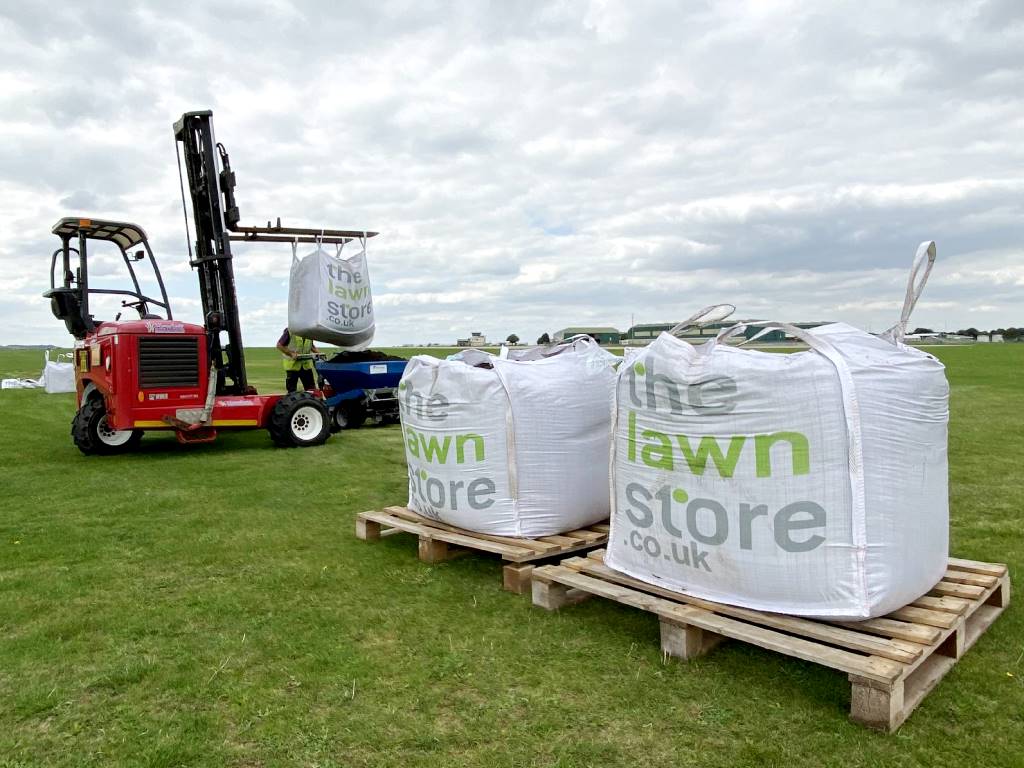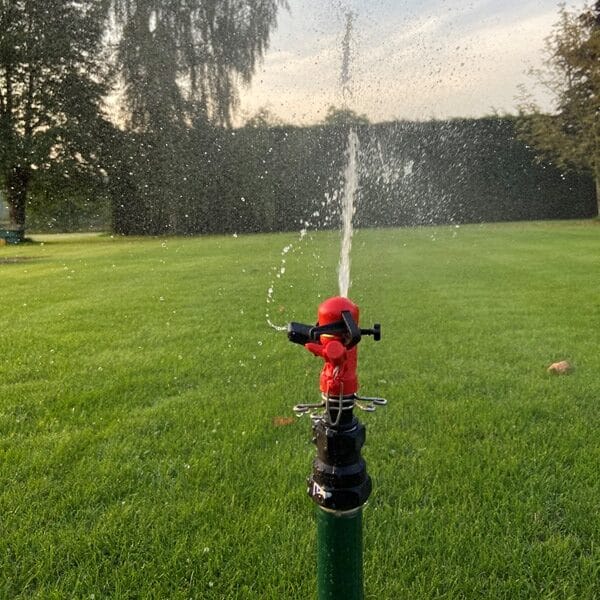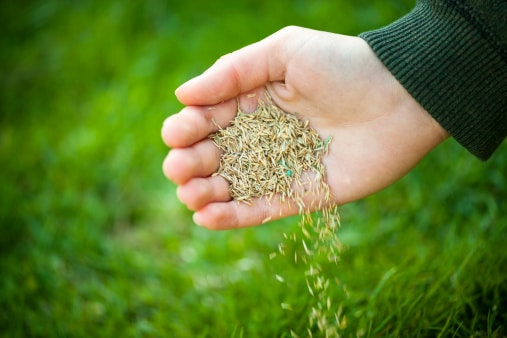Using Wildflower turf is the most successful way of creating a wildflower meadow in your garden.
Soil preparation is exactly the same as if you were going to sow a wildflower meadow from seed but wildflower turf has the advantage of providing an instant wildflower oasis with a 100% success rate in comparison with a 30% success rate when seeding.
Soil preparation for laying wildflower turf or Wildflower Mat
Prep Stage 1
For success when turfing a wildflower meadow it is vitally important that the area to be turfed must be totally free of weeds and grass prior to turfing to reduce unwanted competition from perennial weeds such as dandelions, docks, ground elder which might try to grow up through the turf as it establishes. Wildflower Turf does not need good quality top soil, it is actually better to have poor quality non-fertile soil which will promote slower growth and reduce broad leaved weeds and grass from choking out the wildflowers in the future.
To create a sterile environment the area to be turfed must be totally free of vegetation. This must be planned at many months in advance and can be done in a variety of ways. Killing off the area two or three times with a total herbicide such as Glyphosate tends to be a popular method or other organic methods such as thoroughly digging through and manually removing the weeds or covering the area with a large plastic sheet 12 months in advance, this plastic sheet method is particularly effective on stubborn weeds such as Couch, Bindweed and Ground Elder which are not susceptible to weed killer
Prep Stage 2 – Soil cultivation
The area to be turfed should be lightly cultivated to create a fine seed bed. Deep cultivation is not necessary and might increase the risk of disturbing dormant weed seeds. Cultivation can be carried out using a rotavator or tiller and the seed bed should be raked down to a fine smooth tilth using a metal soil rake removing large stones or other unwanted debris.
It is preferable that the area should be left fallow after cultivation to allow disturbed weed seeds to germinate so they can be successfully killed off with Glyphosate or removed with a hoe prior to seeding.
Laying your wild flower turf or Wildflower Mat
The turf will be delivered on a pallet in rolls or slabs depending on the time of year. It is crucial to lay the turf within 24 hours of delivery as the turf will quickly deteriorate if left on the pallet. If you are not ready to lay the turf, remove it from the pallet, unroll and keep watered.
The amount of growth on your wildflower turf will depend on the time of year and how mature the turf is, this could vary from half an inch long to eight inches long. Do not worry if your new turf appears thin with an open sward, this is normal because wild flowers need room to grow.
Lay the wildflower turf just as you would with regular lawn turf, in staggered rows and abutting the joints. Water immediately to prevent the turf from drying out. Any wildflowers which have been flattened by being rolled up will soon perk up within a few days.
If you are laying wild flower turf on a bank use small wooden pegs or bamboo canes, approximately 4-6 inches long, inserted firmly into each turf to support it whilst it is rooting.
Hewlett Turf & Landscapes Ltd are experts in the supply and lay of Wild Flower Turf or Wildflower Mat.
Maintenance and after care of newly laid wildflower turf
Watering
- Once laid, water the turf thoroughly for the first week if the weather is dry. If the soil is not soaked before laying, it is important to check that this initial watering soaks through to the soil beneath the turf. During this watering, check by lifting a corner of the turf to ensure that the soil is damp.
- Do not allow the turf to dry out before it establishes and is rooted – roughly two to four weeks.
- For the first growing season, it is important to water the turf occasionally during extended dry spells.
- Once well established, the wildflower turf will cope well with most circumstances but the flowers will benefit from watering during very dry periods.
Fertiliser
- Never apply fertiliser to wildflower turf.
Ongoing maintenance
There are a number of options for subsequent management depending on the soil fertility, the weather conditions in the individual seasons and what your objectives are.
Most people tend to cut down the meadow once per year during the late autumn after seedheads have set, but some prefer to also make an interim medium height cut during the summer. Mowing of your wild flower meadow can be carried out with a heavy duty mower or strimmer/brush cutter. Mow short to about 25mm so light can get into the sward during the winter. It is vitally important that the cuttings are always removed.
If the soil is fertile, or the growing season is especially good, this can result in very strong growth which will eventually cause lodging (falling over) and looking untidy in the summer. In this case, the management regime can be modified where an additional cut in summer can be introduced. Cutting at this time reduces the grasses’ vigour, results in a shorter sward and a later flowering.
An open sward over the winter ensures healthy, disease free plants which can benefit from what light is available to them over the winter months. As spring approaches, the wildflowers and grasses are in the perfect condition to develop flowers and seed heads quickly and to repeat their perennial cycle thus guaranteeing a wildflower meadow year after year.









